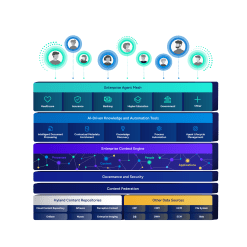Strategies for reducing operational costs
Shaving even a small percentage of your total operating costs will work wonders for your bottom line. Here are a few strategies to cut costs throughout your enterprise:
Optimize work processes
Are your employees bogged down by inefficient workflows and manual, back-office processes? If the answer is yes, your business processes are long overdue for an overhaul.
Speak to your employees to identify bottlenecks and pain points as a guiding framework for process improvements, such as supply chain disruptions or ineffective project management steps. This enables you to pinpoint specific areas of concern for strategic redesigns or optimizations to effectively streamline processes and maximize operational efficiency.
However, a successful optimization exercise doesn’t mean that organizations can be complacent after; continuous process improvements are critical for sustained business value creation and cost savings.
Reduce IT operational costs by implementing modern tools
Investing in cutting-edge, industry-relevant technology will pay dividends in the long run. Consider deploying AI-enabled automation tools and cloud-based solutions to automate repetitive, administrative work for faster, more efficient outputs.
Some modern applications may even come with robust capabilities to augment the workforce and empower users to innovate with new business opportunities.
Content management is often an area where modernization can offer efficiency benefits and long-term reduction in operational costs. Automated content processes speed up work processes by making it easier to find and use documents, as well as simplifying compliance efforts through features like automated audit trails.
AI agents, for example, can streamline operations by automating complex workflows and minimizing reliance on IT teams for routine tasks. AI agents speed processes while maintaining accountability by involving human operators for critical decisions and reducing costly errors. Plus, ease of scalability further enhances savings, enabling users to handle growing workloads without a corresponding increase in IT expenses.
By digitizing content operations and enabling a paperless work environment, organizations can also forgo the need for physical document storage, cutting down on hefty rent or storage costs.
> Read more: Reducing costs and elevating efficiencies with cloud-enabled content solutions
Supply chain management
From procurement to distribution, extensive supply chain networks can be a hidden cost center for organizations not keeping tabs on each stage of the cycle. There are plenty of opportunities to lower costs through supply chain optimization:
- Sustainable procurement: Switching to sustainable sourcing practices and having strong ESG credentials can reduce up to 10% in total costs (think energy-efficient infrastructure) while improving business sentiment and value.
- Inventory management: Storing inventory can be extremely costly, with warehouse rental, taxes and transportation just a few of the expenses involved. Optimize inventory with the goal of achieving the right supply-demand balance, thus minimizing excess stock and reducing running costs in the process.
- Logistics: Consolidate shipments or invest in technology such as automated container loading systems to reduce costs. Optimizing delivery routes or decentralizing warehousing are also a few other cost-saving alternatives.
Analyze your business expenditure
Pull out your financial statements and make a thorough review of where your cash is flowing out. Consider the expenses-to-revenue ratio, discretionary expenses and even your business capital to identify how and where costs can be further trimmed.
Beware of shadow IT
Shadow IT, which occurs when employees use company IT or cloud resources for personal use, can significantly add to costs and expose your IT infrastructure to malware and cyber threats.
It’s important to understand that employees are engaging in shadow IT to work more efficiently. This means that their current tools for day-to-day work aren’t capable of helping them to get the job done, which happens when companies are utilizing legacy systems that lag behind their more modern counterparts.

















